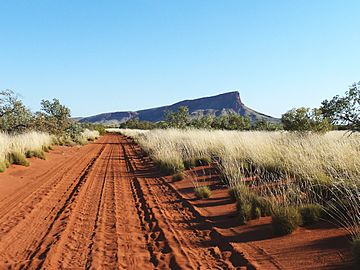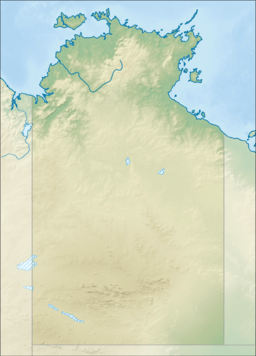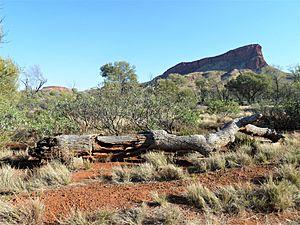Mount Leisler facts for kids
Quick facts for kids Mount Leisler |
|
|---|---|

Looking north from Sandy Blight Junction Road
|
|
| Highest point | |
| Elevation | 897 m (2,943 ft) AHD |
| Naming | |
| Etymology | Mr Louis Leisler |
| Geography | |
| Location | Northern Territory, Australia |
| Parent range | Kintore Range |
Mount Leisler is a tall mountain located in the Kintore Range. You can find it in the south-west part of the Northern Territory in Australia. It stands about 897 meters (2,943 feet) high, making it the highest point in its mountain range.
Contents
Exploring Mount Leisler's History
Mount Leisler was named a long time ago by an explorer. This mountain and the Kintore Range have interesting stories about how they got their names.
Who Named Mount Leisler?
The mountain was named by William Tietkens on May 27, 1889. Tietkens was leading a group called the "Central Australian Exploring Expedition." This trip was supported by the Royal Geographical Society of Australasia.
Why the Name Kintore Range?
Tietkens named the Kintore Range after Lord Kintore. Lord Kintore was the governor of South Australia at that time. It was a way to honor him for his important role.
The Story Behind Mount Leisler's Name
Mount Leisler was named after Mr. Louis Leisler from Glasgow. Mr. Leisler helped fund Tietkens' expedition. His money allowed Tietkens to explore new lands between Fowlers Bay, South Australia and the Musgrave Ranges.
Measuring the Mountain's Height
During his expedition, William Tietkens measured the height of Mount Leisler. He found it was about 446 meters (1,462 feet) above the flat land around it. This was an important measurement for mapping the area.
The Famous Tietkens Tree
At the base of Mount Leisler, Tietkens marked a tree with the letter 'T' and the numbers '5.89'. This mark showed he was there in May 1889. Years later, in 1960, another explorer named Len Beadell found this tree again. Beadell was building the Sandy Blight Junction Road when he rediscovered it. Even then, some branches of the tree still had leaves! Sadly, the tree has since died and fallen over.



